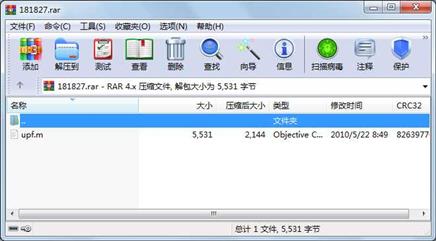资源简介
基于无迹卡尔曼滤波ukf的粒子滤波matlab程序

代码片段和文件信息
%?????????????????????????????????????????????????????????? % unscented_particle_filter.m
%?????????????????????????????????????????????????????????? % Unscented particle filter application
%
% A particle filter based on the unscented transform that
% estimates the target state X_k = [x_k y_k x_dot_k y_dot_k]
% based on observations of its range and range rate from
% two independent radar/sonar sensors.
%
% Copyright Sandeep Sira 2008
%
%?????????????????????????????????????????????????????????? clear
close all;
clc;
clear all;
% Initialization
X_0 = [0 0 10 150]‘; % Initial target state
a = [0 2000]; % x?y coordinates of Sensor A
b = [3000 1500]; % x?y coordinates of Sensor B
dT = 2; % Sampling interval in seconds
endk = 50; % Number of sampling epochs
R = diag([10 4 10 4]); % Covariance matrix of sensor observation
% error
q = 0.5; % Process noise intensity parameter
Ns = 10; % Number of particles
P_0 = diag([1000 100 1000 100]);% Initial covariance
% UPF parameters
na = 4; kappa = 4; alpha = 1; beta = 0;
lambda = alpha^2*( na+kappa) -na;
% State transition matrix
F = [1 0 dT 0;
0 1 0 dT;
0 0 1 0;
0 0 0 1];
% Process noise covariance matrix
Q = q*[ dT^3/3 0 dT^2/2 0;
0 dT^3/3 0 dT^2/2;
dT^2/2 0 dT 0;
0 dT^2/2 0 dT];
sqrtm_Q = sqrtm(Q);
inv_Q = inv(Q);
inv_R = inv(R);
sqrtm_R = sqrtm(R);
% Generate a target trajectory
X(:1) = X_0;
for k = 2: endk
X(:k) = F*X(:k-1) + sqrtm_Q * randn(4 1);
end
% Sample an initial value of the target state. This is the mean of the
% density P(X_0)
XHat (:1) = X_0 + sqrtm(P_0)* randn(4 1);
% Sample the particles from the initial density
Xp = XHat*ones(1Ns) + sqrtm(P_0)*randn(4Ns);
% Mean and covariance of particles
mx = mean(Xp 2)* ones(1Ns); err_X = Xp -mx;
for j = 1:Ns
P_xx(::j) = err_X(:j) * err_X(:j)‘;
end
% Commence unscented particle filtering loop
for k = 2: endk
% Project the particles forward
Xp_in = F* Xp;
% Get the observation
zeta = X(:k);
da_true = norm( zeta ([1:2]) -a‘);
db_true = norm( zeta ([1:2]) -b‘);
va_true = zeta ([3:4])‘ * (zeta ([1:2]) -a‘)/ da_true;
vb_true = zeta ([3:4])‘ * (zeta ([1:2]) -b‘)/ db_true;
Zk = [ da_true; va_true; db_true; vb_true] + sqrtm_R * randn (4 1);
for j = 1:Ns
% Obtain the sigma points
P(::) = P_xx(::j);
sqrt_P_xx = real(sqrtm( (na + lambda )*P ));
chi_X (::) = mx(:j)* ones (1 2* na+1) + ...
[ zeros(41) sqrt_P_xx -sqrt_P_xx ];
w_chi = [ kappa ones(12* na)/2 ] / (na + kappa );
% Propagate the sigma points
chi_X = F* chi_X + sqrtm_Q * randn (4 2* na +1);
% Calculate mean and variance
mx(:j) = chi_X * w_chi‘;
err_chi_X = chi_X -mx(:j)* ones(1 2* na +1);
PHat = err_chi_X *(err_chi_X.*( ones(4 1)* w_chi ))‘;
% Range and range rate of the sigma points as
% observed by the sensors
chi_X_da = sqrt( sum((chi_X([1 2] :) -a‘* ones(1 9)).^ 2 ) );
chi_X_db = sqrt( sum((chi_X([1 2] :) -b‘* ones(1 9)).^ 2 ) );
chi_X_va = diag(chi_X([3:4] :)‘ ...
*( chi_X([1:2] 属性 大小 日期 时间 名称
----------- --------- ---------- ----- ----
文件 5531 2010-05-22 08:49 upf.m
----------- --------- ---------- ----- ----
5531 1
 川公网安备 51152502000135号
川公网安备 51152502000135号
评论
共有 条评论